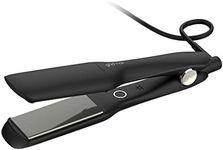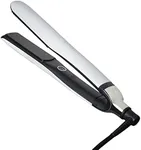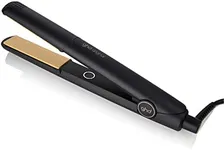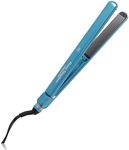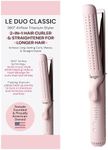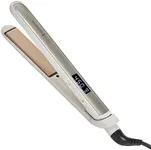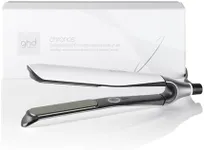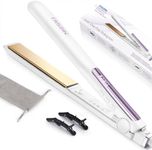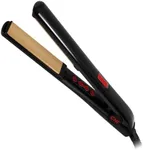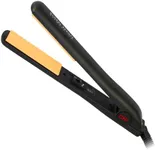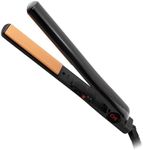Buying Guide for the Best Hair Straightener
Choosing the right hair straightener can make a big difference in how your hair looks and feels. The best straightener for you depends on your hair type, how often you plan to use it, and the styles you want to achieve. It's important to consider the main features and specifications, as these will affect the performance, safety, and health of your hair. Understanding what each feature does and how it matches your needs will help you make a smart choice.Plate MaterialThe plate material is what actually comes into contact with your hair and heats up to straighten it. Common materials include ceramic, titanium, and tourmaline. Ceramic plates heat evenly and are gentle, making them good for most hair types, especially fine or damaged hair. Titanium plates heat up quickly and can reach higher temperatures, which is helpful for thick or coarse hair, but they can be too harsh for delicate hair. Tourmaline plates help reduce frizz and add shine, making them a good choice for frizzy or curly hair. To pick the right one, think about your hair’s texture and how sensitive it is to heat.
Plate WidthPlate width refers to how wide the straightener’s plates are. Narrow plates (about 1 inch) are best for short hair, bangs, or detailed styling, while wider plates (1.5 inches or more) are better for long, thick, or very curly hair because they can cover more hair at once and speed up the process. If you travel often or want a versatile tool for different styles, a medium width is a good compromise. Choose the width based on your hair length and how quickly you want to style it.
Temperature RangeThe temperature range tells you how hot the straightener can get. Lower temperatures (around 250-300°F) are safer for fine, thin, or damaged hair, while higher temperatures (up to 450°F) are needed for thick, coarse, or very curly hair. Some straighteners have adjustable settings, which is ideal because you can tailor the heat to your hair’s needs. Always use the lowest effective temperature to protect your hair from damage.
Heat-Up TimeHeat-up time is how quickly the straightener is ready to use after you turn it on. Fast heat-up times (under 30 seconds) are convenient if you’re often in a hurry, while longer times may not matter if you have more time to get ready. If you value speed and efficiency, look for a straightener with a quick heat-up feature.
Auto Shut-OffAuto shut-off is a safety feature that turns the straightener off after a certain period of inactivity, usually between 30 and 60 minutes. This is important for preventing accidents or fire hazards if you forget to turn it off. If you’re forgetful or have a busy lifestyle, this feature can give you peace of mind.
Ionic TechnologyIonic technology helps reduce frizz and static by emitting negative ions, which smooth the hair cuticle and lock in moisture. This is especially useful if you have frizzy, dry, or damaged hair, or if you live in a humid climate. If you struggle with frizz or want extra shine, look for a straightener with this feature.
Cord Length and SwivelCord length and whether the cord swivels can affect how easy the straightener is to use. A longer cord gives you more flexibility, especially if your outlet is far from your mirror. A swivel cord prevents tangling and makes it easier to maneuver the straightener at different angles. If you want a hassle-free styling experience, consider these features.
